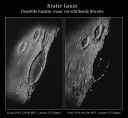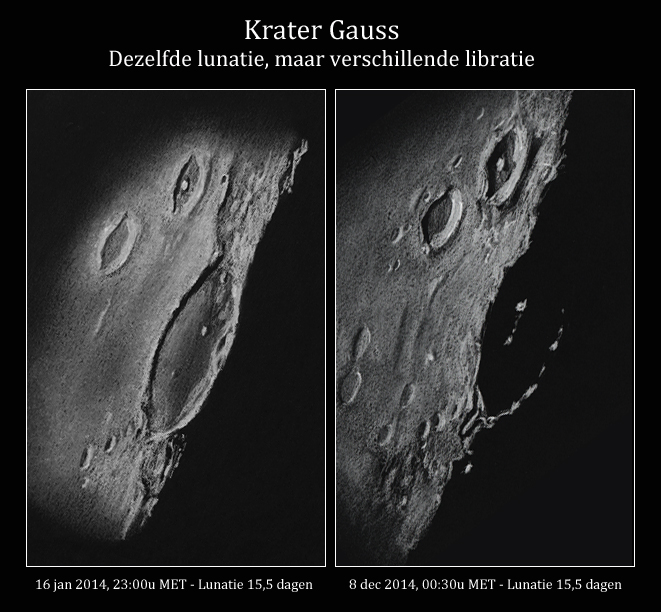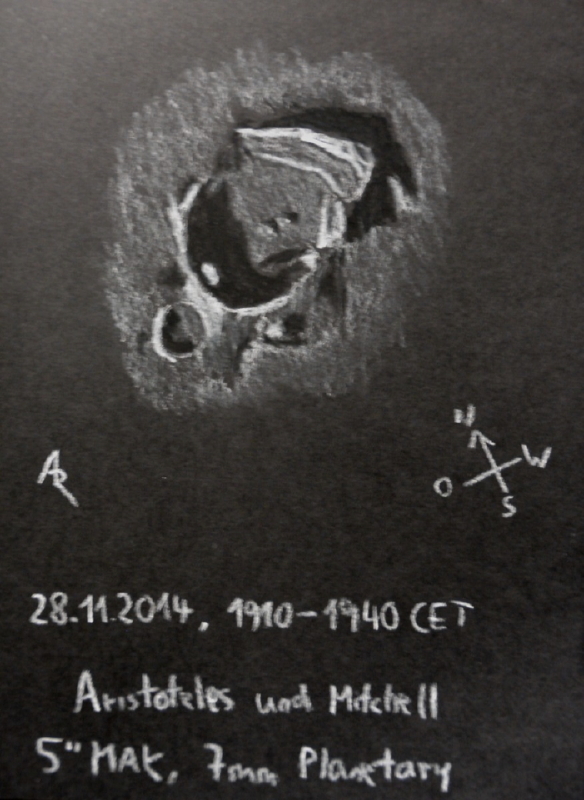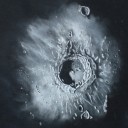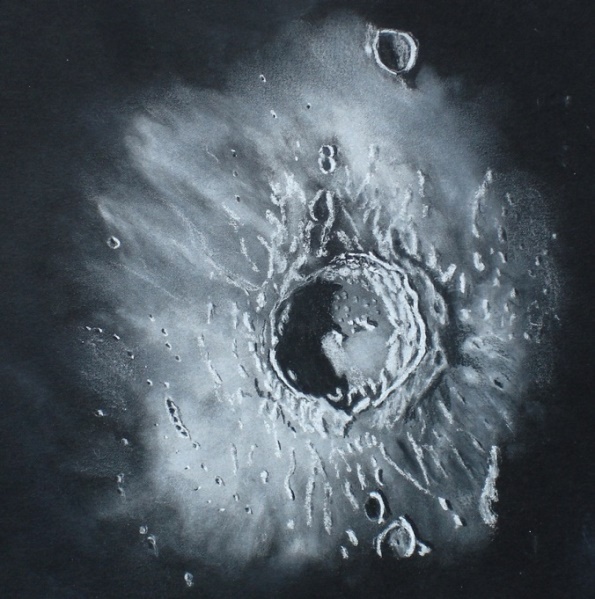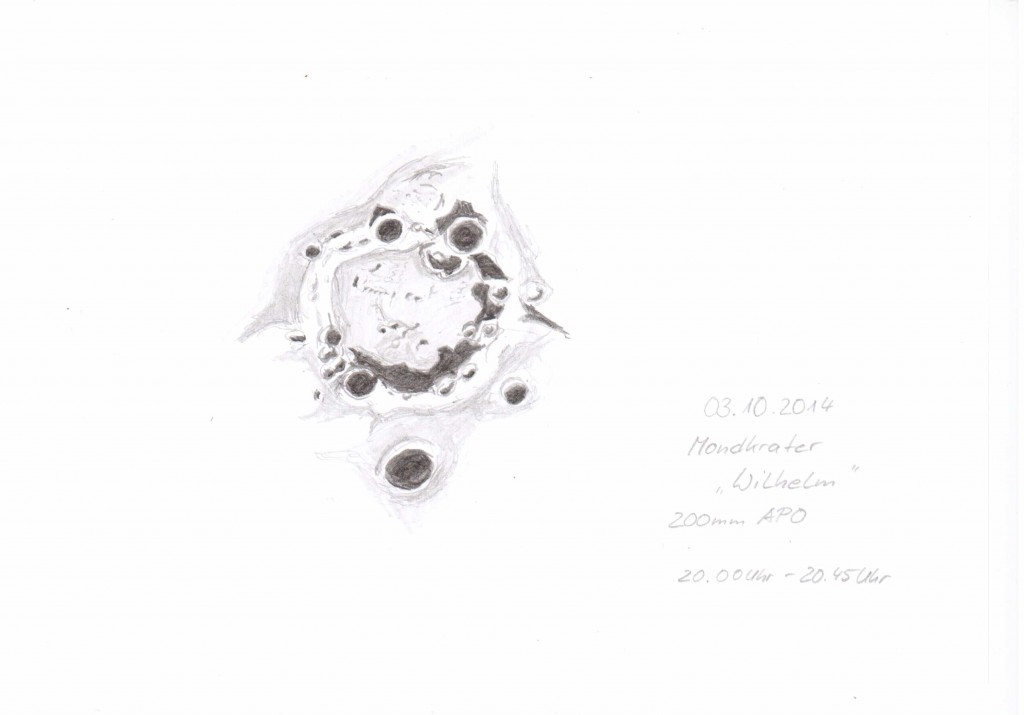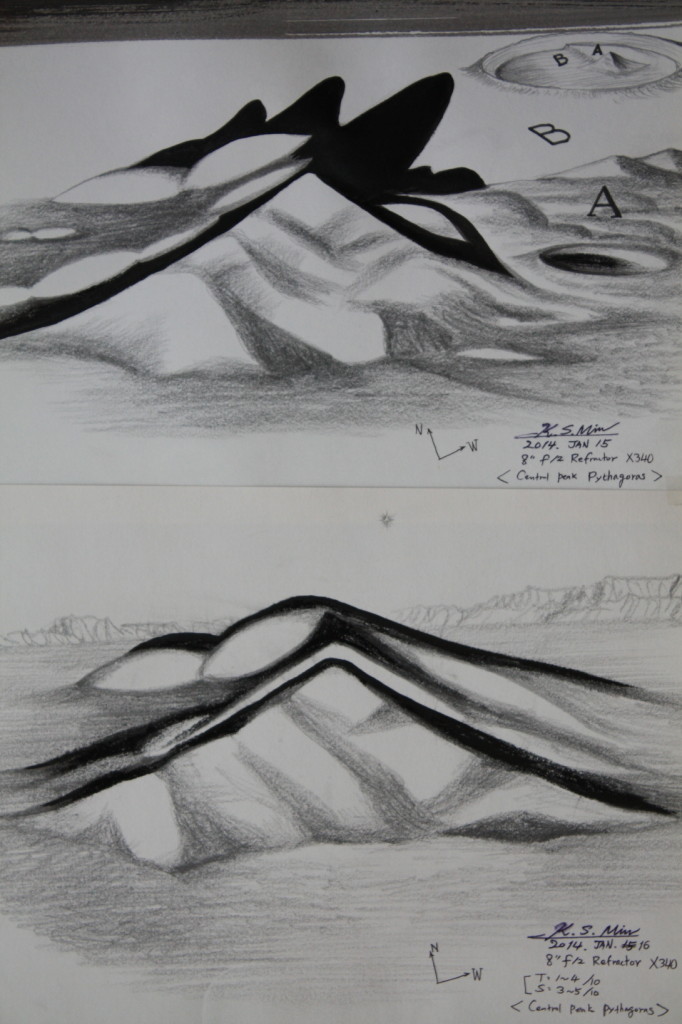
Object Name – Pythagoras
Object Type – Lunar impact crater
Location – Deventer, The Netherands
Date – Januari 3, 2015
Media – White pastel pencil on black paper
So far this winter is terrible for astronomy. Nothing but clouds and rain in the Netherlands… But yesterday evening the skies finally cleared and my 3″ Polarex Unitron was quickly set up in the backyard. Crater Pythagoras on the northeastern limb of the Moon looked particularly nice – like a deep rocky bowl in the lunar surface. Seeing conditions were fair, so I pumped up the magnifcation to a crazy (for a 3″) 200x. It still gave a pleasant and sharp view and sketching was quite comfortable with the crater looking big in the eyepiece.
Pythagoras is a 130km wide impact crater with staggering 5km high terraced walls. The central peaks (I could see two of them) are also pretty huge: 3,5km high! Imagine the panoramic view from the top op one of those mountains….
Sketch made with a pastel pencil on black paper, through a 3″ Polarex Unitron at 200x (Baader 6mm BGO). The image is mirror reversed.
Clear Skies,
Roel Weijenberg
www.roelblog.nl

